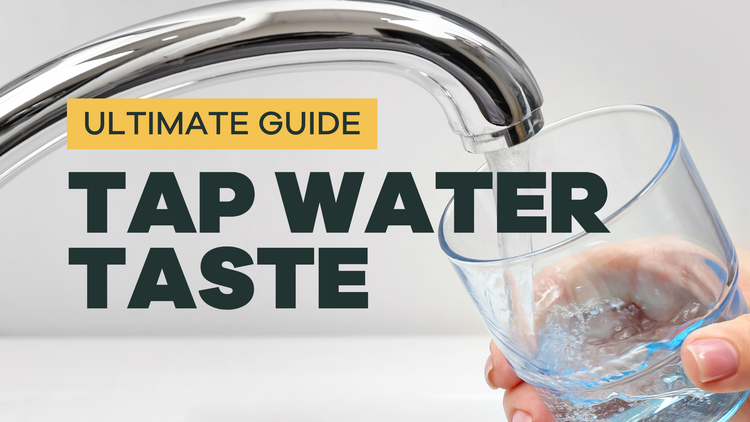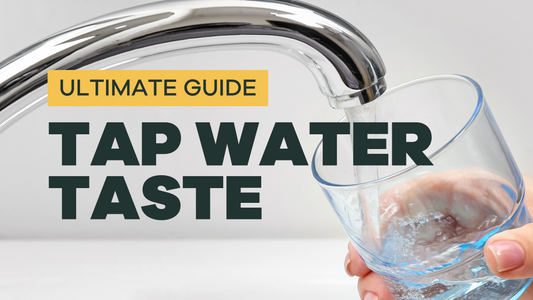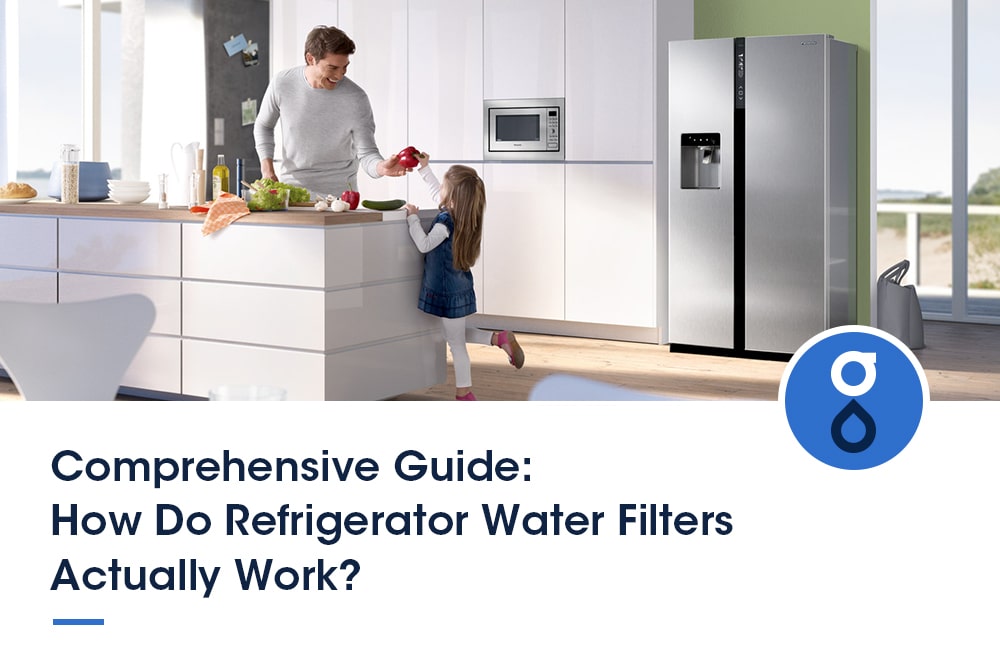Your fridge water tastes terrible due to filter issues, bacteria, or old water lines. Fixing these problems improves taste quality.

Bad-tasting fridge water is a common issue many households face. Addressing this problem involves understanding potential causes such as expired filters, bacterial contamination, or aged water lines. Filters need regular replacement to ensure water purity. Bacteria can accumulate in the lines and tank, leading to unpleasant tastes.
Old or damaged water lines may also impart a foul flavor. Identifying the root cause helps in taking corrective actions. This guide aims to provide practical solutions to restore the freshness of your fridge water. Regular maintenance and attention to these details ensure consistently good-tasting water.
Common Causes
Are you wondering why your fridge water tastes bad? Several factors can cause this problem. Understanding these common causes will help you address the issue quickly.
Filter Issues
A common reason for bad-tasting fridge water is filter issues. Filters are essential for removing impurities. If not changed regularly, they can become clogged and ineffective.
- Expired Filters: Most filters need replacement every six monthsfilter’syour filter’s lifespan.
- Incorrect Installation: A poorly installed filter can reduce water quality. Ensure the filter fits appropriately.
- Low-Quality Filters: Cheap filters may not remove all contaminants. Invest in a high-quality filter.
Contaminated Water Supply
Your fridge water may taste bad due to a contaminated water supply. Tap water quality varies by location. Poor water quality fridge. Your fridge’s water taste.
| Contaminant | Effect on Taste |
|---|---|
| Chlorine | Bitter or chemical taste |
| Hard Water | Metallic or mineral taste |
| Microorganisms | Musty or earthy taste |
Check your local water quality report. This will help you identify potential contaminants. Addressing these can improve the taste of your fridge water.

Credit: mytapscore.com
Identifying The Problem
Experiencing bad-tasting fridge water can be frustrating. Identifying the problem is the first step to a solution. This section will guide you through the steps of tasting and visual inspection.
Tasting The Water
Begin by tasting the water from your fridge. Pay attention to specific flavors. Is the water metallic, chlorine-like, or musty? Identifying the taste helps pinpoint the issue.
- Metallic Taste: This could mean rusty pipes or a filter problem.
- Chlorine Taste: Common in city water supplies. A filter might be the solution.
- Musty Taste: Indicates possible mold or bacteria in the water line.
Understanding these tastes directs your troubleshooting efforts effectively.
Visual Inspection
Next, perform a visual inspection of your fridge and water dispenser. Look for signs of wear or damage. Check the water filter. Is it due for a replacement?
| Component | What to Look For |
|---|---|
| Water Filter | Discoloration or debris buildup |
| Water Line | Kinks or visible damage |
| Dispenser Nozzle | Mold or residue |
Regular maintenance of these components can prevent issues. A clean, functional water filter is crucial. Inspect the water line for any kinks or damage. Ensure the dispenser nozzle is free from mold or residue.
By performing these simple checks, you can often identify the source of bad-tasting water.
Filter Maintenance
Maintaining your fridge water filter is crucial. A clean filter ensures fresh-tasting water. Neglecting this can lead to insufficient water. Let’s explore how to keep your filter in top shape.
Replacing Filters
Replacing your fridge filter regularly is vital. Most manufacturers recommend replacing it every six months. Check your fridge manual for specific instructions.
To replace the filter:
- Turn off the water supply.
- Locate the filter compartment.
- Remove the old filter.
- Insert the new filter.
- Turn the water supply back on.
Replacing filters ensures your water stays fresh and clean.
Cleaning Tips
Cleaning your filter area is equally important. Even with a new filter, dirt can accumulate. Here are some cleaning tips:
- Wipe the filter compartment with a damp cloth.
- Use a mild detergent if needed.
- Rinse thoroughly to remove any soap residue.
- Dry the area completely before installing a new filter.
Regular cleaning keeps your water tasting great. It also extends the life of your filters.
Water Supply Concerns
Are you wondering why your fridge water tastes bad? The issue might be your water supply. Water quality can vary, leading to unpleasant tastes. Learn more about water supply concerns and how they affect your fridge water.
Municipal Water Quality
Municipal water is treated before it reaches homes. Despite this, chemicals like chlorine are used. These chemicals can leave an aftertaste. Other contaminants can also sneak through.
- Chlorine: Used to kill bacteria but leaves a taste.
- Fluoride: Added for dental health, but can taste strange.
- Lead: Can enter water through old pipes.
If your municipal water has an odd taste, it affects your fridgIt’ster, too. It’s essential to understand what might be causing this.
Well Water Issues
Well, water is another. It isn’t treated the same way municipal water is. Natural contaminants can easily find their way in.
- Iron: Can give a metallic taste.
- Sulfur: Often smells like rotten eggs.
- Organic Matter: Can cause unpleasant tastes and smells.
Testing well water regularly is essential. It ensuwhat’su know what’s in your water.
| Contaminant | Source | Effect on Taste |
|---|---|---|
| Chlorine | Municipal Treatment | Bleach-like taste |
| Iron | Well Water | Metallic taste |
| Sulfur | Well Water | Rotten egg smell |
| Fluoride | Municipal Treatment | Bitter taste |
Understanding your water supply is crucial for better-tasting fridge water. Regular testing and maintenance can help. Stay informed to ensure your water is clean and tasty.
Fridge Maintenance
Proper maintenance of your fridge is vital for fresh-tasting water. Neglecting maintenance can lead to unpleasant issues. Here’s how to keep your fridge in top shape.
Cleaning The Dispenser
The dispenser can harbor bacteria and mold. Regular cleaning is essential.
- Turn off the water supply to the fridge.
- Remove the dispenser tray and wash it with warm, soapy water.
- Use a small brush to clean the nozzle and surrounding areas.
- Rinse thoroughly and dry before reassembling.
Cleaning the dispenser monthly ensures fresh water. This also prevents buildup and clogs.
Inspecting The Plumbing
Plumbing issues can affect water taste. Inspect the water line and filters.
- Check the water line for kinks or leaks.
- Replace the water filter every six months.
- Ensure the water line is correctly connected to a cold water source.
Inspecting the plumbing regularly prevents contaminants and ensures clean water.
| Task | Frequency |
|---|---|
| Clean Dispenser | Monthly |
| Inspect Water Line | Every Three Months |
| Replace Water Filter | Every Six Months |
Following these steps ensures your fridge water always tastes fresh.

Credit: glacierfreshfilter.com
Dealing With Contaminants
Does your fridge water taste bad? Contaminants might be the problem. Contaminants can make water taLet’strange. Let’s explore how to deal with them.
Identifying Contaminants
First, identify the contaminants causing the sour taste. These may include:
- Chlorine: Often used to treat water but can leave a bad taste.
- Heavy Metals: Lead and mercury can seep into water.
- Bacteria: Harmful bacteria can grow in your water system.
- Algae: Algae growth can give water a musty smell.
Use a water testing kit to check for these contaminants. Testing kits are easy to use and give quick results.
Purification you’ve
Once you’ve identified the cit’sminants, it’s time to purify your water. Here are some effective methods:
- Activated Carbon Filters: These filters remove chlorine and foul odors. They are easy to install and maintain.
- Reverse Osmosis: This method removes heavy metals and bacteria. It uses a membrane to filter out contaminants.
- UV Purifiers: UV light kills harmful bacteria It’sviruses. It’s a chemical-free purification method.
- Water Softeners: These systems remove minerals that cause bad taste. They are instrumental if you have hard water.
Combining these methods can give you the best results. Make sure to change filters regularly to maintain clean water.
Diy Fixes
Is the water from your fridge tastDon’ttrange? Don’t worry! You can try some simple DIY fixes. These tips will help you get fresh-tasting water again.
Simple Solutions
There are a few easy fixes to try first. Here are some steps you can follow:
- Change the Water Filter: An old filter can make water taste bad. Replace the filter every six months.
- Clean the Water Dispenser: Mold and bacteria can grow in the dispenser. Use a mixture of vinegar and water to clean it.
- Flush the Water Lines: Air and old water can stay in the lines. Run the water for a few minutes to clear it out.
- Check the Water Supply: The primary water source can sometimes have issues. Test the tap water to see if it tastes different.
When To Call A Professional
Sometimes, DIY fixes may not be enough. Here are signs that you need a professional:
| Issue | Description |
|---|---|
| Persistent Bad Taste | If the taste doesn’t improve, call a technician. |
| Water Leaks | Leaks can cause water to taste bad. A professional can fix leaks. |
| Strange Noises | Odd sounds might mean a bigger problem. Let an expert check it out. |
| Old Fridge | Older fridges may have more issues. A professional can help diagnose them. |
:max_bytes(150000):strip_icc()/__opt__aboutcom__coeus__resources__content_migration__serious_eats__seriouseats.com__images__2015__08__20150806-shrimp-guide-vicky-wasikx-2-49a8395cb980406095a3f14d380f12c4.jpg)
Credit: www.seriouseats.com
Preventing Future Issues
Preventing future issues with your fridge water is crucial. Regular maintenance and upgrading equipment ensure fresh water. Let’s dive into how to maintain your fridge and upgrade equipment.
Regular Maintenance
Regular maintenance keeps your fridge water fresh. Follow these steps:
- Clean the water dispenser: Wipe it weekly with a damp cloth.
- Replace water filters: Change the manufacturer’s instructions every six months.
- Check water lines: Inspect for kinks or leaks monthly.
- Flush the system: Run water through the dispenser for five minutes monthly.
Upgrading Equipment
Upgrading equipment can solve bad-tasting water. Here are some upgrades:
| Upgrade | Benefit |
|---|---|
| Advanced water filters | Remove more contaminants for cleaner water. |
| New water lines | Eliminate plastic or metal taste. |
| Filter bypass plugs | Useful if you prefer an external filtration system. |
These simple steps ensure your fridge water tastes excellent. Maintain your fridge and consider upgrading equipment. Enjoy fresh, clean water every day.
Frequently Asked Questions
How Do I Get Rid of the Bad Taste in My Refrigerator Water?
Replace the refrigerator water filter. Clean the water dispenser and reservoir. Run several gallons of water to flush the system.
Why Does My Refrigerator Ice Taste Bad but Water is Fine?
Ice can absorb odors from food in the freezer. Regularly clean your freezer and ice maker to prevent this.
Why Does The Water In My Water Dispenser Taste Bad?
The water in your dispenser might taste bad due to bacteria buildup, old filters, or contaminated water sources. Clean regularly and replace filters.
Why Does My LG Refrigerator Water Taste Bad After Changing The Filter?
Your LG refrigerator water may taste bad after changing the filter due to trapped air or impurities. Run several gallons through the new filter to flush it. Ensure the filter is installed correctly.
Conclusion
Bad-tasting fridge water can be frustrating. Regular maintenance and filter changes are crucial. Check for contaminants and clean your water dispenser. Address these issues promptly to enjoy fresh-tasting water. A little effort ensures your fridge water remains clean and refreshing.
Stay proactive to maintain the quality of your drinking water.


GIPHY App Key not set. Please check settings